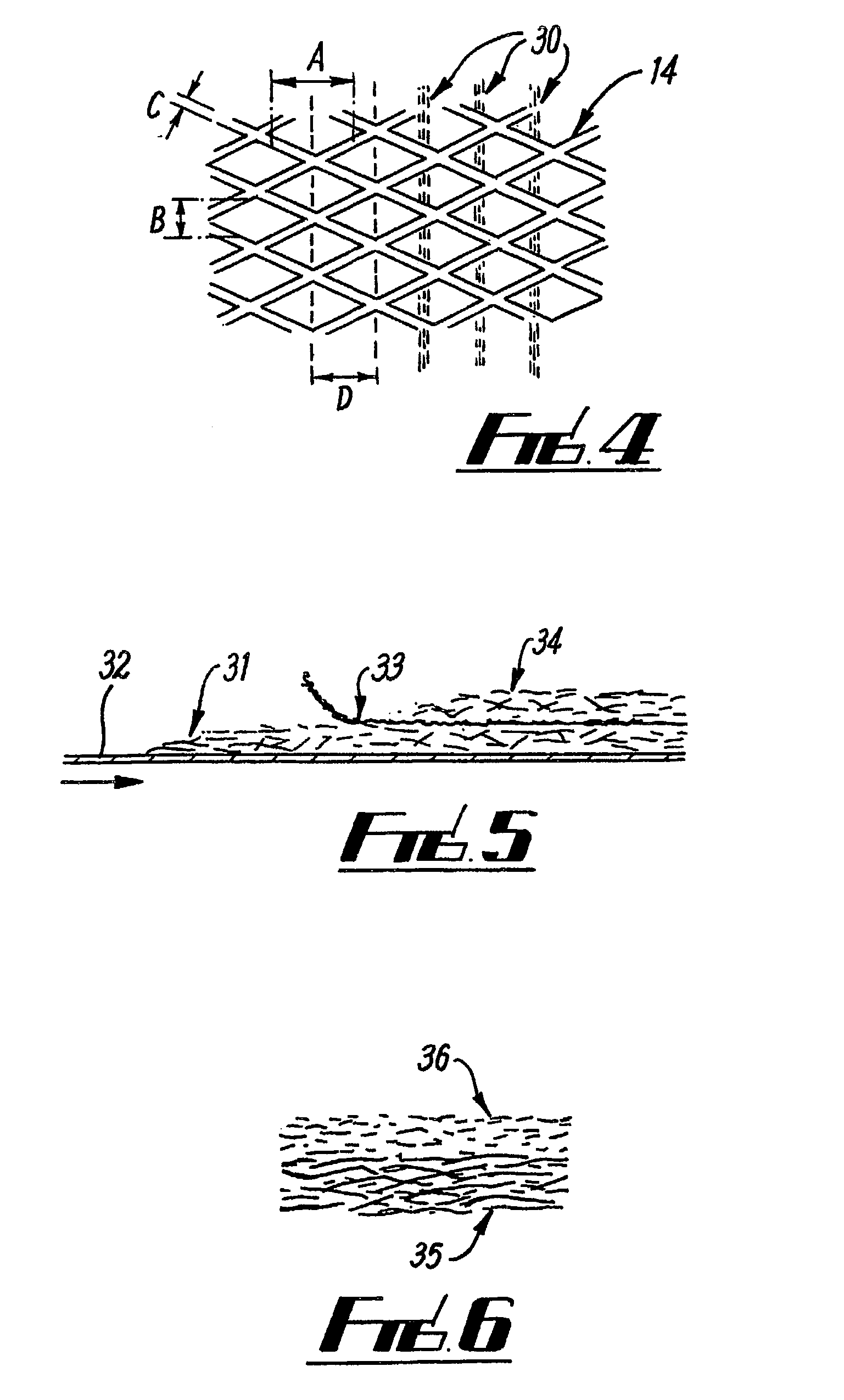Formation of sheet material using hydroentanglement
a technology of hydroentanglement and sheet material, which is applied in the direction of needling machines, weaving, pattern making, etc., can solve the problems of short very fine fibres, low strength products, and material that does not have the suppleness and feel of natural leather, and achieves the effect of adequate strength and soft handling
- Summary
- Abstract
- Description
- Claims
- Application Information
AI Technical Summary
Benefits of technology
Problems solved by technology
Method used
Image
Examples
Embodiment Construction
[0052]Referring to FIG. 1, this shows apparatus for use, by way of example, in converting leather waste microfibres into a coherent sheet of reconstituted artificial leather.
[0053]The apparatus, as shown, has seven treatment stations 1-7. Two endless conveyor belts 8, 9 in the form of porous carriers (such as open fabrics or wire meshes or other similar material are driven continuously around rollers 10 so that upper runs 11, 12 of the belts 8, 9 advance successively through the stations 1-7.
[0054]Each station 1-7 comprises a hydroentanglement head 13 consisting of one or more rows of fine jet outlets which extend from above across the respective belt 8, 9 and are connected to a source of pressurised water whereby jets of water can be directed from the outlets towards the belt 8, 9 at each station 1-7. The pressure and the physical characteristics of the outlets, and hence the jet energies can be individually selected and controlled for each station.
[0055]Two of the stations 1, 3 ov...
PUM
| Property | Measurement | Unit |
|---|---|---|
| diameters | aaaaa | aaaaa |
| jet pressure | aaaaa | aaaaa |
| thicknesses | aaaaa | aaaaa |
Abstract
Description
Claims
Application Information
 Login to View More
Login to View More - R&D
- Intellectual Property
- Life Sciences
- Materials
- Tech Scout
- Unparalleled Data Quality
- Higher Quality Content
- 60% Fewer Hallucinations
Browse by: Latest US Patents, China's latest patents, Technical Efficacy Thesaurus, Application Domain, Technology Topic, Popular Technical Reports.
© 2025 PatSnap. All rights reserved.Legal|Privacy policy|Modern Slavery Act Transparency Statement|Sitemap|About US| Contact US: help@patsnap.com



